|
|
A hand-tinted picture postcard of Thomassin Foss at Goathland, extremely well-executed; the style is that of Frank Meadow Sutcliffe, but the photographer is uncredited. The printer is H. Graham Glen, Wortley, Leeds. William Glen tells us: ”The photograph would have been taken by either Henry Graham Glen or less likely one of his sons. The business H. Graham Glen, Wortley, Leeds was both photography and printing. The tinting would have been done probably by Henry.”
Image courtesy of Jean Dean, many thanks to William Glen for that update.
The Archive didn’t know the date of this photograph but Hurd’s woodyard took over after Duckhole pit was closed; the wood stacks being visible in this view. On top of the hill we can see where the ’buckets’ or aerial ropeway turned. Eric Johnson updated with: “Duckhole mine closed in 1946; also visible is the old road junction from Mill Bank past Kilton Mill, branching right to Skinningrove and left to Carlin How. Moving left the rail bridge over the zig zag line to Skinningrove can be made out. (I believe it was removed in 1958). Moving up the photograph, the old rail bridge from Carlin How to Loftus can be seen. On top of the bank to the left of the aerial ropeway can seen the old North Loftus mine chimney, removed in ???; the street lighting column seen on Mill Bank in the foreground is of a type used in ???. split the difference 1946/1958, guess 1952.”
Image courtesy of Mike Holliday and thanks to Eric Johnson for the update.
Here we are in deep water again, would you say this is about the 50’s ? We are advised by Jan Snaith (nee Carveth): ”This is Stonehouse’s Garage (now Cutts) on Brotton Road, Carlin How. We lived in the house on the corner next to the garage. The road regularly flooded and we all used to help push the cars through the water when they got stuck – great fun.” Sharon Frost tells us: “I lived at No. 11 Brotton Road it was left just like it was in the 1950’s”.
Image courtesy of Mike Holliday; also thanks to Jan Snaith and Sharon Frost for the updates.
When the Archive first viewed this photograph the title of the establishment was intriguing; and researches then had to be carried out. Eric Johnson advised: “This image is from the book ‘Middlesbrough’2’ by Araf Chohan. A pre-1914 photograph of Parker’s Dining Rooms, located at 34 Bridge Street East. The spire of St Peter’s church, above rooftops was destroyed in bombing raid in 1940.” The paving on the street in front also caused some comment, being the traditional slag bricks, but laid in a herringbone pattern; unlike the streets in Carlin How with the traditional right to left straight lines.
Thanks to Eric Johnson for the update.
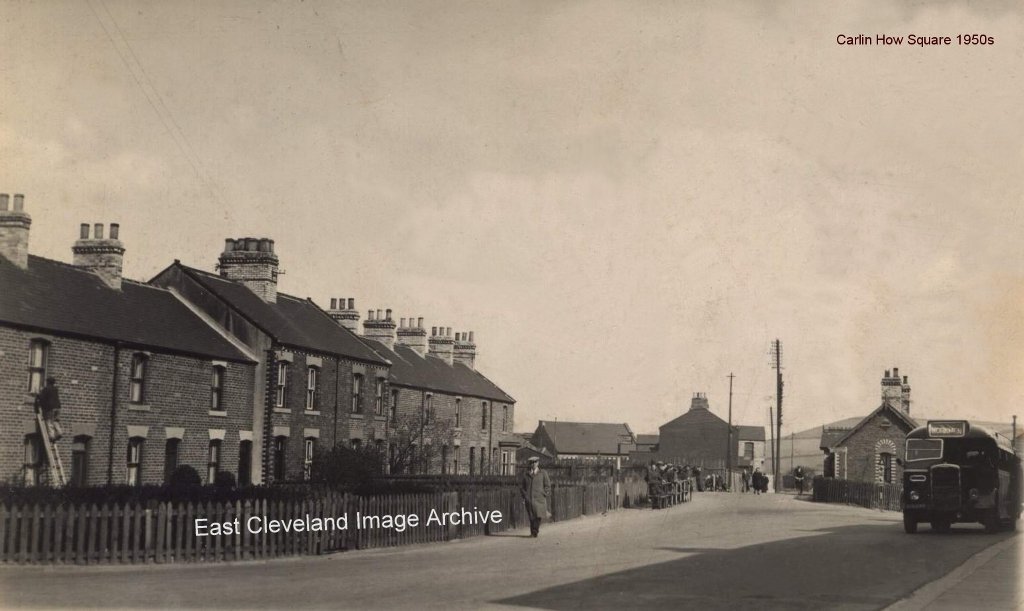
This is a nice photograph of Carlin How Square in the early 1950s. Notice all the telephone wires going to the large chimney stack on the centre house rather than to the lamp-post as today. Also note the bus stand on the left where everyone used to catch the bus Loftus / Whitby Bound. The bus on the right is marked Workmen, it is obviously the day shift ending time from Skinningrove works. Note also what was called Cunningham’s house in the centre of the junction at that time. Joan Jemson tells us: ”I remember when we lived at East Loftus about this time a ’works return’ for dad used to be 3d a day, what’s that in today’s money less than 2p?” Rita Beckham Adds: “”I enjoyed the photographs of Carlin How they brought back a lot of memories; we lived at 31 Lax Street, before it was knocked down to make way for the new road. We then moved to 10 Front Street when I was about 13, the person up the ladder in the photograph of the square is where we lived, but not sure who it is. Our Dad was blacksmith at Skinningrove pit, and had a garth near the bottom of Pit Bank.”
Image and primary caption courtesy of Derick Pearson and many thanks Joan Jemson and Rita Beckham for the updates.
Brotton High Street again; this time the photograph is taken from the High Wall, looking up the High Street. Plenty of people about and this is earlier image than the last; there is no Salvation Army Hut, no Roman Catholic Church, the entrance to the quarry is visible and so is the Blood Tub (Queens Arms) and St Margaret’s church prominent on the hill top. Note the four complete gas lamps as well. Things don’t change so much; men still gather at the High Wall. Whilst Patsy Gallon tells us: ”My grandparents lived in Brotton; my grandfather John James Rogerson would not walk past those houses as he felt sure they would fall down!” Interestingly they still lean and as yet have not fallen down.
Image courtesy of Derick Pearson and others, thanks to Derick Pearson for dating information and thanks to Patsy Gallon for the update.
This nice photograph with the mine in the background left the Archive asking for the date and details. Eric Johnson informed us: ”in the centre of the photograph, can be seen the calcining kilns and materials hoist. The three kilns were originally on the island of RAASAY in the Inner Hebrides; dismantled in about 1943 with each part carefully numbered and loaded into ships. One local man John Macleod was killed in the hold when the sling broke. The kilns were taken to Lingdale and re-erected shortly afterwards, this photograph is from about 1950.” Thanks to Eric for the information.
Image courtesy of Cleveland Ironstone Mining Museum, thanks to Eric Johnson for the information.
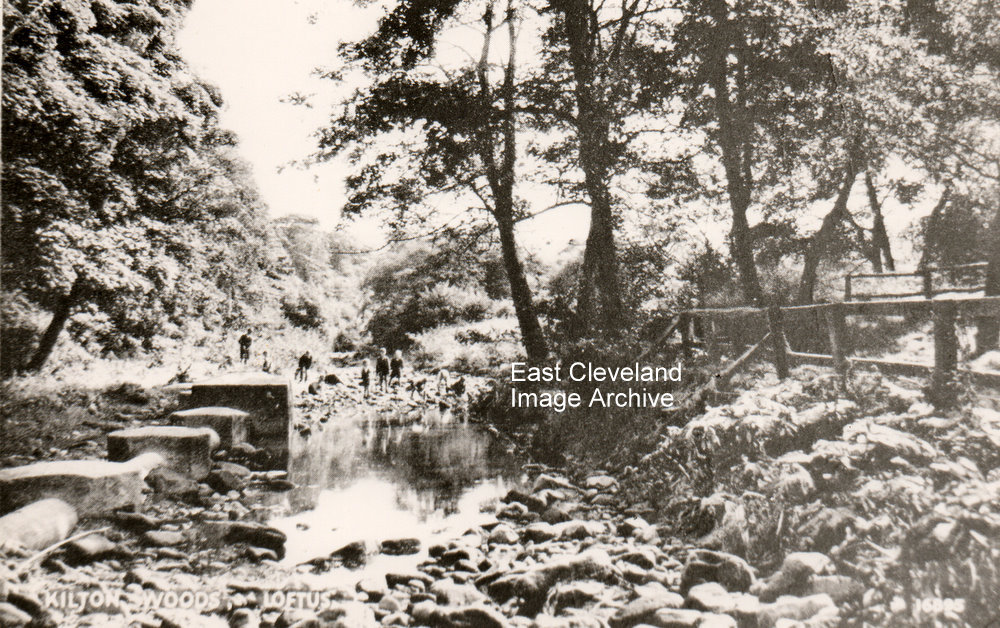
Kilton woods on one side of the valley and Whitecliffe woods and Glover’s Path on the other side with the beck running between. The children seem to be having a great time in the beck
This is an image Derick Pearson reproduced on a CD rom for an exhibition in 1983, his comments included: ”The little pony and trap belonged to Peter Dorman’s family from Stanghow Hall. Peter’s great grandfather was Isaac Scarth who built Stanghow Hall in 1776. This blacksmiths shop replaced an earlier one (c1800) which used to be under the tree at the entrance to the old Easter Field path. For those who don’t remember the Easter Field, it was the Moorsholm wood path next to Stanghow Hall. This later one was there before the turn of the century. My father was playing there in 1929 and got his thumb trapped in a large grindstone which can be seen in this image, beside the bicycle on the right. A bungalow is now on the site of this old blacksmiths shop. When the image is zoomed in the large board to the left of the doorway is advertising a dwelling house for rent.”
Bill Danby has supplied us with the following information about this image: “1. Tom Curnow, a Lingdaler and later a Skeltoner included this photograph in his book, “Skelton and its History”, which is available in local libraries. He describes working the bellows there as a lad. 2. Derick Pearson mentions the Scarths’ at Stanghow House. The family was still there in 1917; their son also called Isaac was killed, aged 23, at Arras while serving as a Lieutenant with the local 1/4th Battalion of the Yorkshire Regiment, on the 23rd April. The circumstances of the day and more details about him are described on my “Skelton in Cleveland in History & 1/4th Battalion Yorkshire Regiment website.”
Paula Miller tells us: ”This image I used in a calendar to raise funds for a local group and Mr Richard (Dick) Dorman bought a copy from me and asked me where on earth did I get the photograph from; as the trap is indeed his and he still has it and invited me to go see it; its rotten now. The lady in the trap was indeed his gran.”
Cuth Earl tells us: ”The blacksmith with the beard is I think my great grandfather George Langstaff. He was the son of John Langstaff, a farmer, who is mentioned in Bulmer’s Directory 1890 – Stanghow Township. Another son, Christopher (Kit) was a grocer in Lingdale. The Langstaff family hailed from County Durham originally, principally in the area of Witton le Wear”.
Image originally supplied by Mike Holliday, but particular thanks to Bill Danby and Derick Pearson for the above information; also to Paula Miller and Cuth Earl for the updates.
A second image of the Coronation Parade of 1937, taken a short time after the one with the horses on also named Coronation Parade 1937. This shows the same scene and the shadow of the chimney pots on the shop roofs you can be certain they were taken on the same day and within minutes of one another. When zoomed in you can see even the people looking out of the windows above are the same people. Derick Pearson advises: “I have the date on similar photographs as 1937 as that is what I was told they were many years ago when I obtained them.”
Image courtesy of Carlin How Community Centre, thanks to Derick Pearson for the update.
|
|
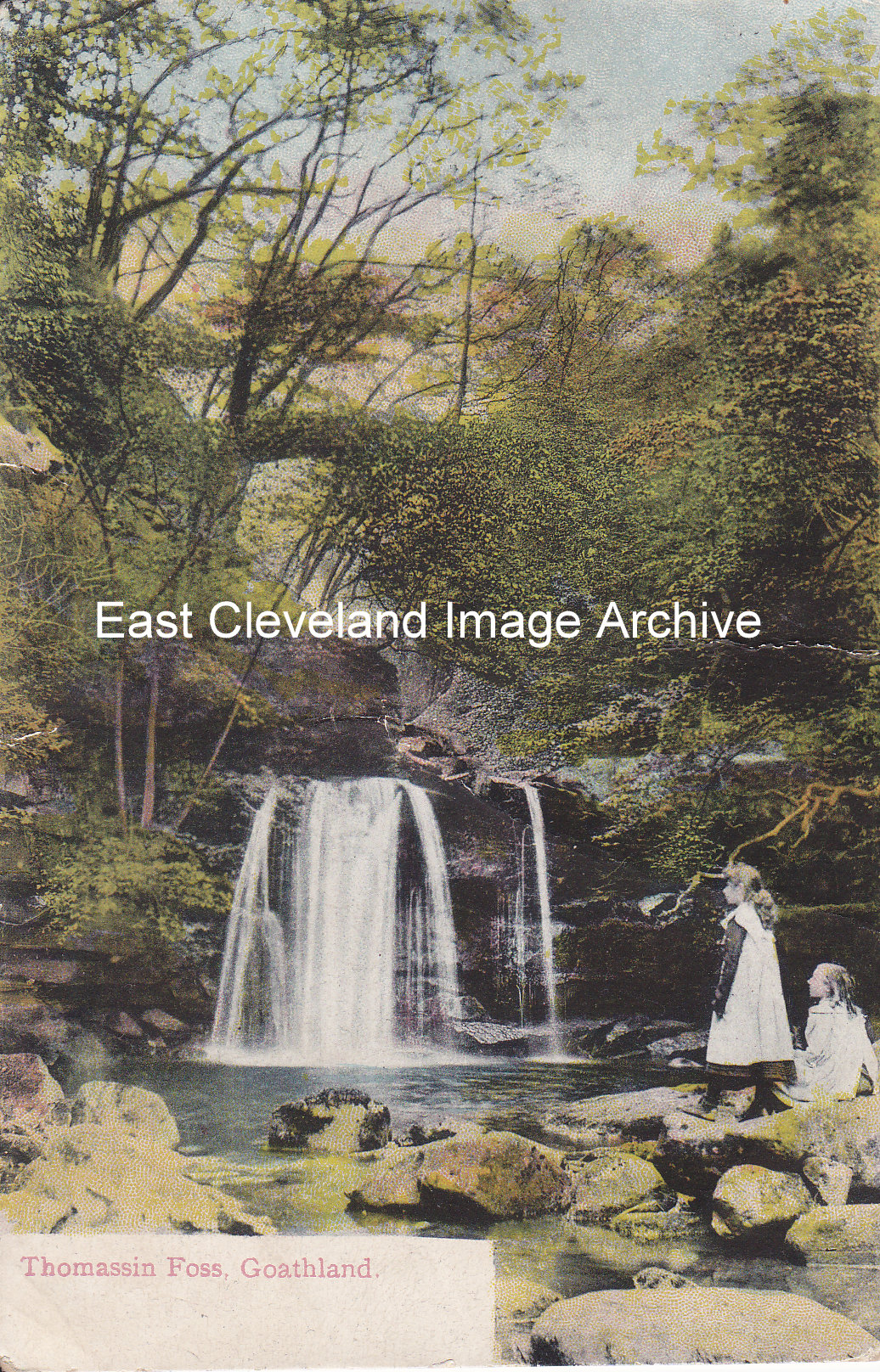
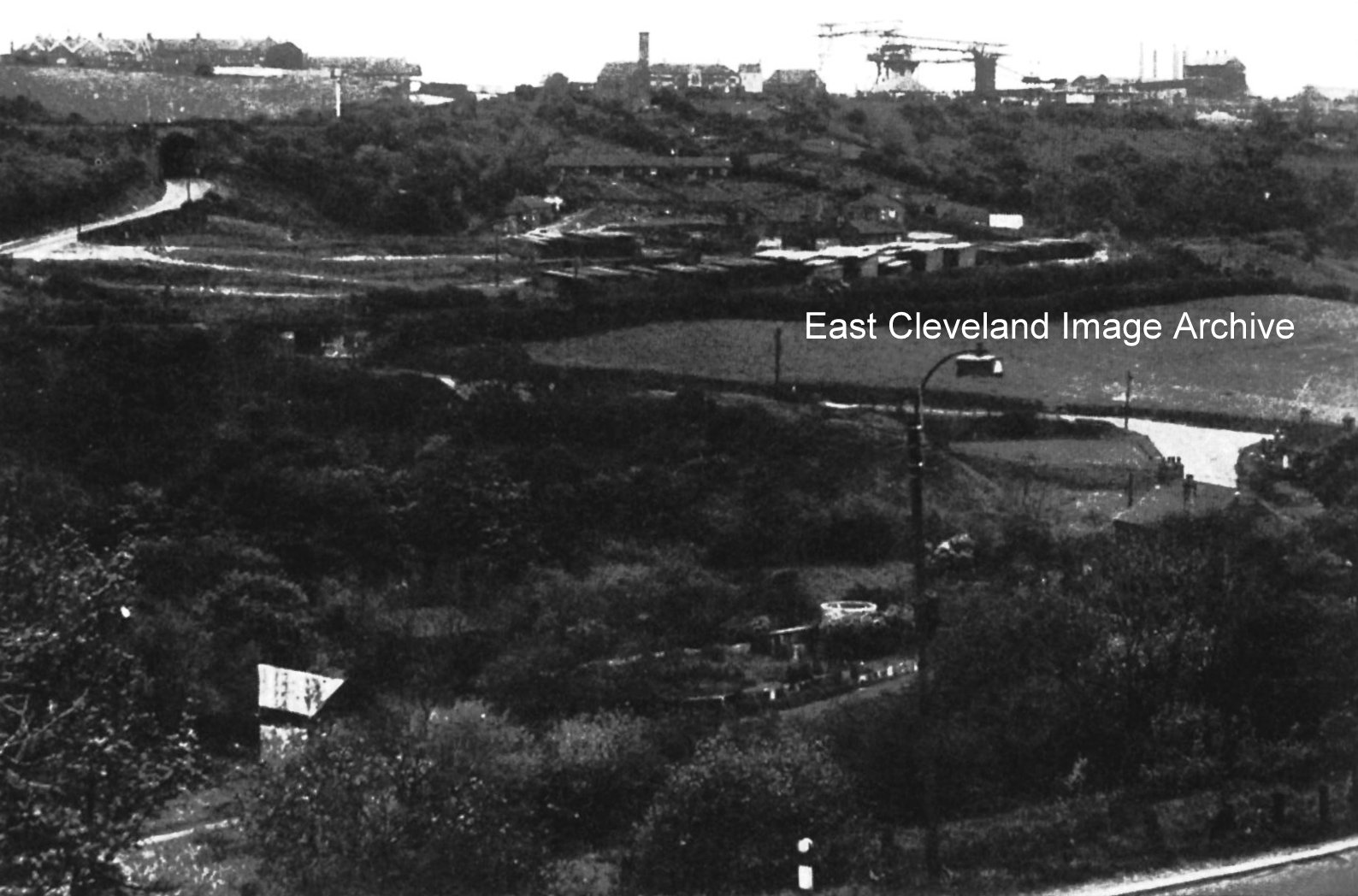
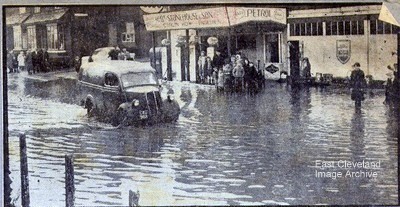
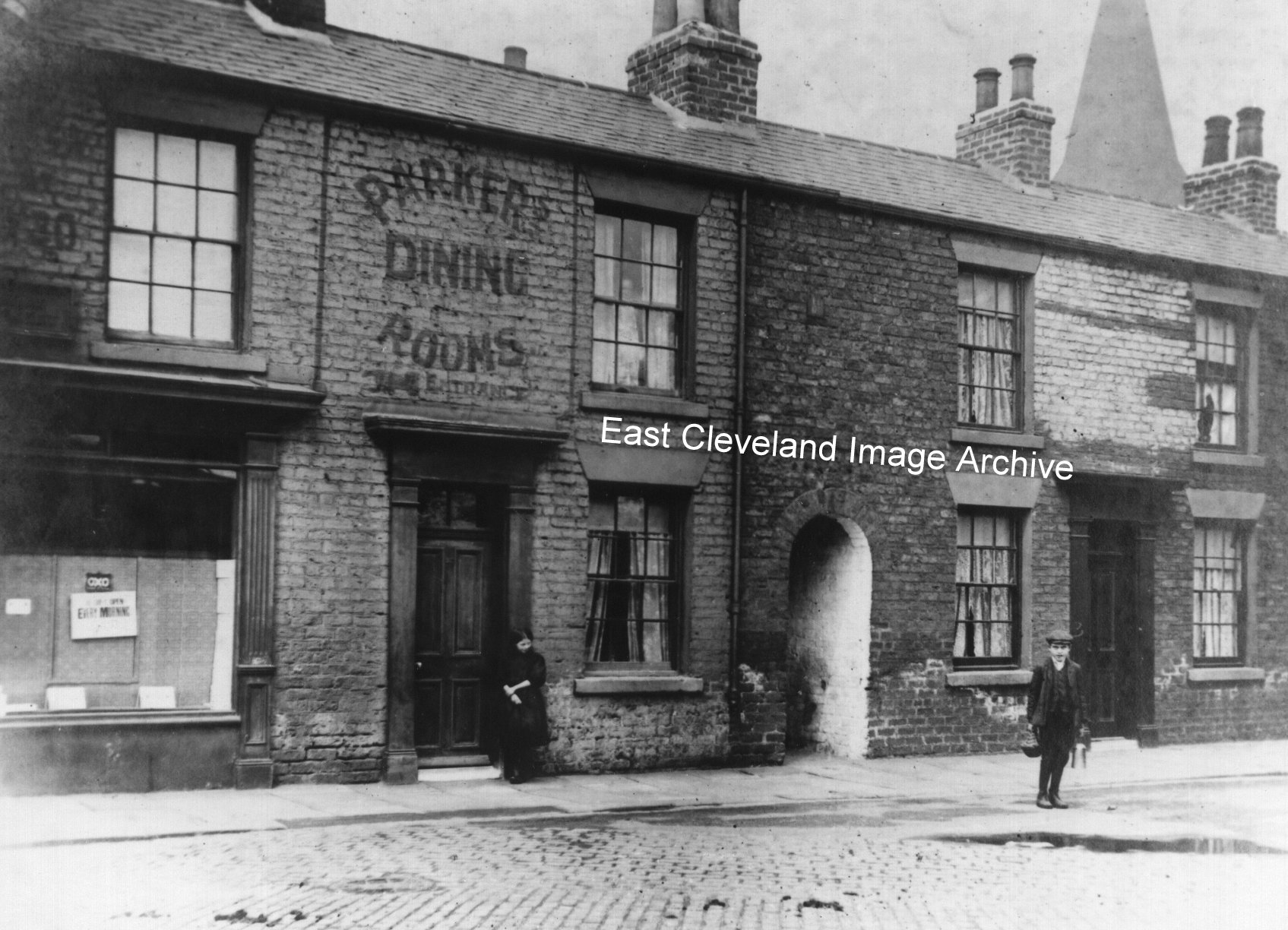

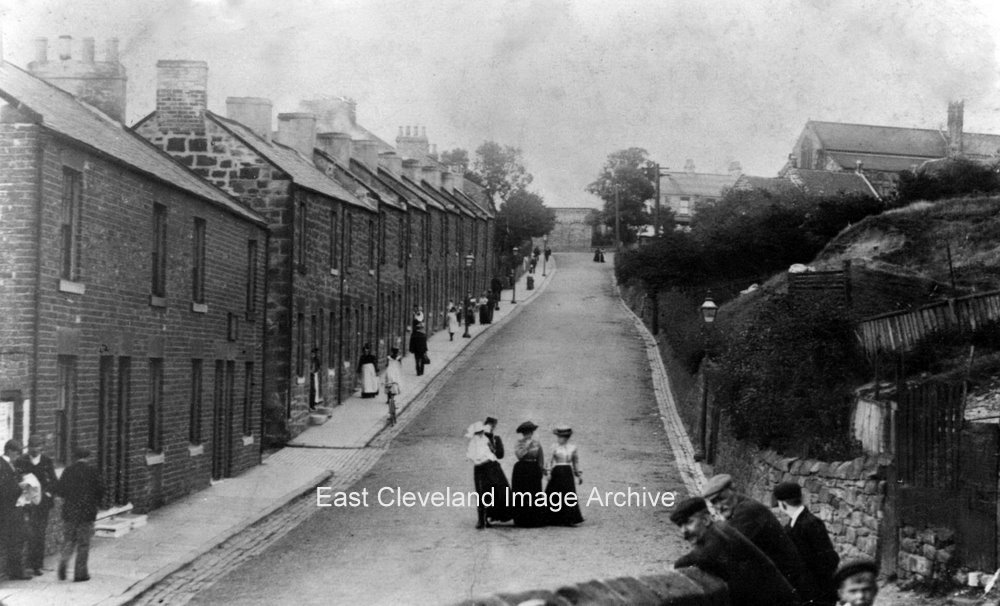
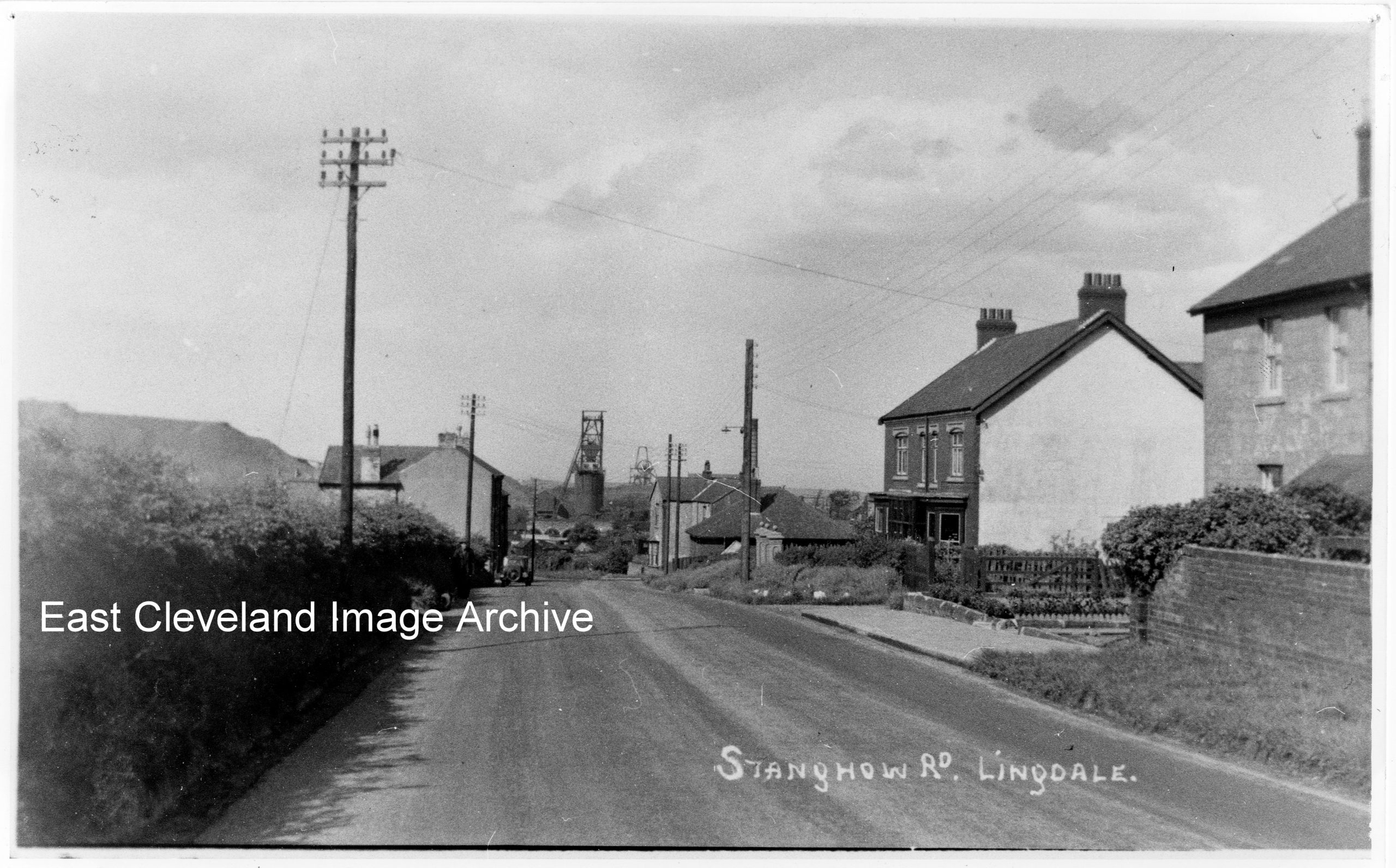

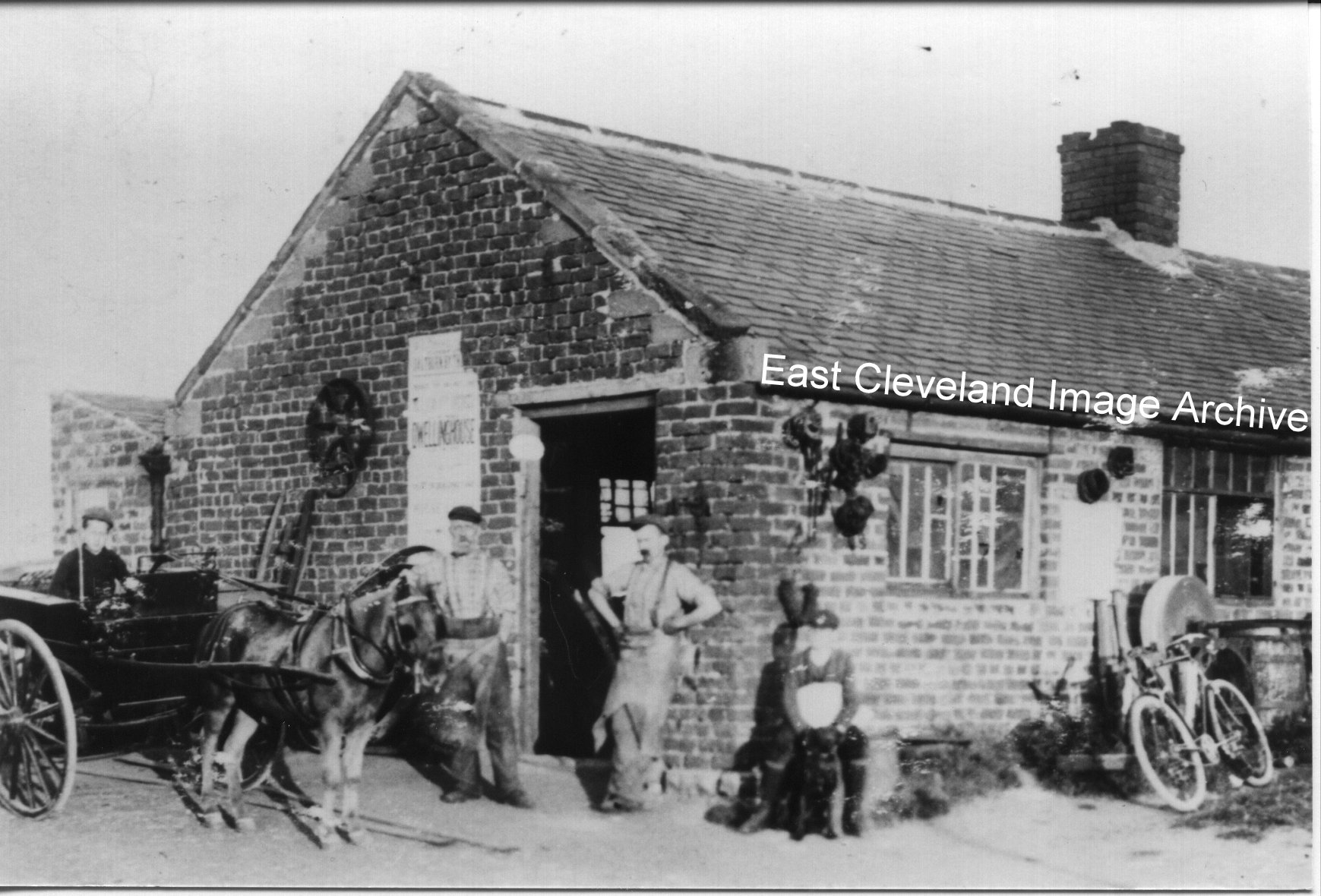
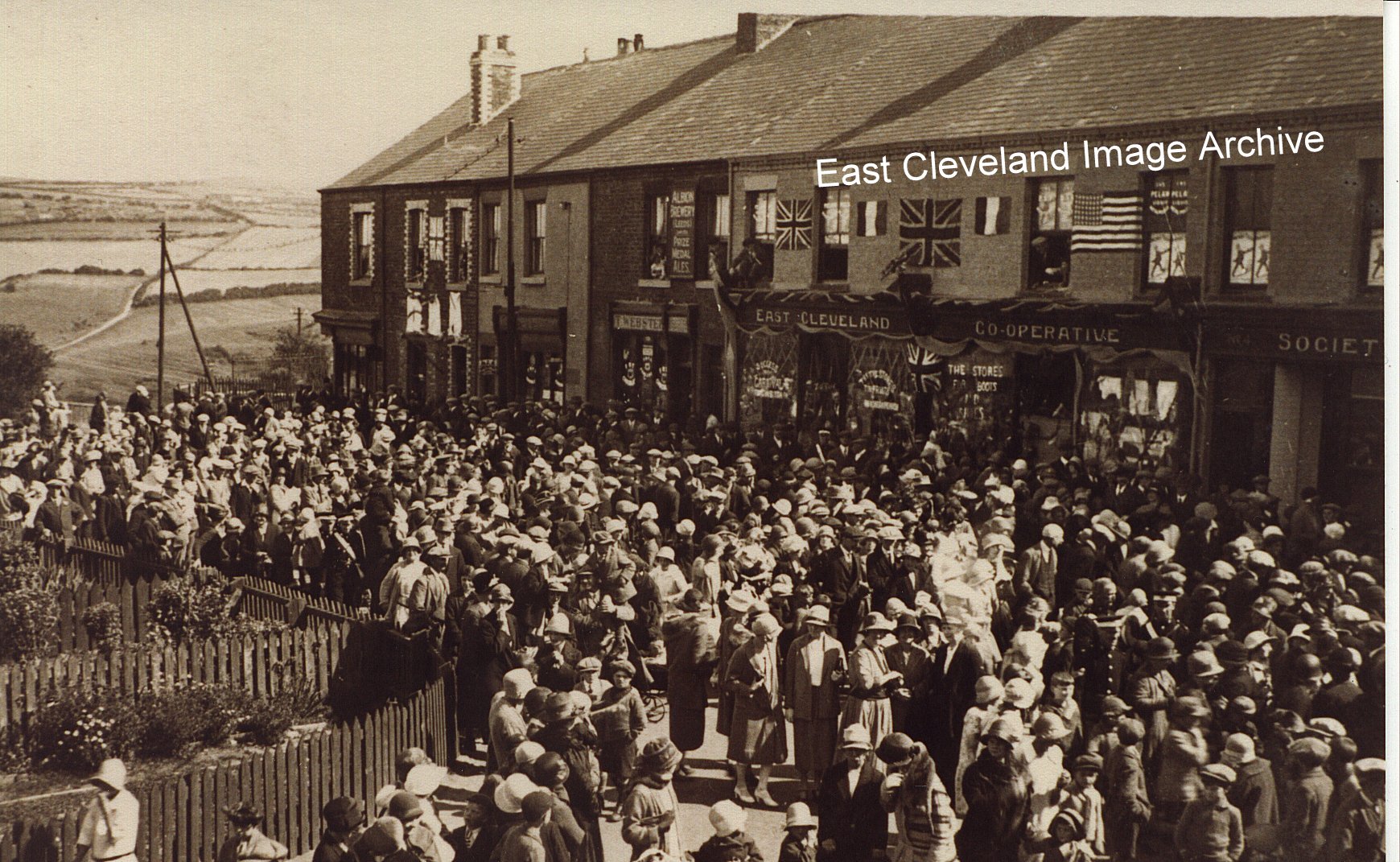
Recent Comments